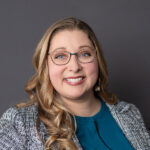Think back to the last big decision you made, and then the last small one. You might think you spent longer deciding on the big one than the small. But in reality, you likely arrived at the answers to both almost instantly, in a split second.
Psychologists have been studying split-second decision-making—those intuitive gut feelings that arise the moment you consider something—for decades. While we often deliberate afterward, using logic to evaluate or justify our choice, research shows that our final decision frequently aligns with that initial instinct (Malcolm Gladwell’s Blink brought this concept to the mainstream).
In marketing, we know most decisions are made in a split second, driven by intuition and emotion. Yet we often fall into the features trap and focus on rational comparisons, like features, specs, and pricing. When this happens, we miss the most powerful moment a consumer experiences: the moment of choice.
Since the moment of choice happens instantly, your job as a marketer is to uncover what drives that immediate emotional or intuitive response. For example:
- When someone visits a car dealership to buy a luxury car, are they drawn by its specific specs—or by how it will make them feel more accomplished or prestigious?
- When someone buys a house, is it because of the sturdy foundation—or because it just “feels like home”?
- When someone chooses a restaurant, is it really about the menu—or the promise of nostalgia, connection, or adventure?
In most cases, the answer is based on an emotional desire or feeling.
- A luxury car represents achievement or status.
- A house feels like a sanctuary.
- A restaurant offers meaningful experiences or new adventures.
Understanding this allows marketers to craft content that resonates with these types motivations. When you focus on emotional drivers, you avoid falling into the features trap, which only comes into play after the critical moment has already passed.
How to Identify Your Ideal Customer’s Moment of Choice
To pinpoint what drives your ideal customer’s split-second decisions, start by speaking to them. Interview three to five customers and ask what sparked their initial intuition to purchase your product or service. Pay close attention to the language they use and the transformation they sought. This insight will help you create content that speaks directly to their emotional drivers, strengthening your messaging—and your conversions.
By recognizing the power of split-second decisions, marketers can shift their focus to what matters most: the emotions and transformations that drive action.











